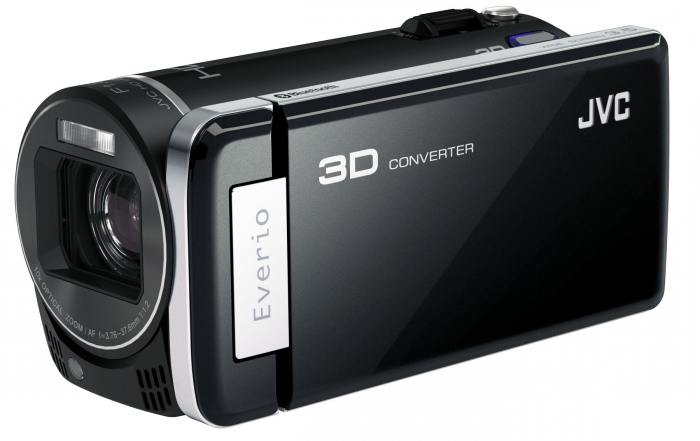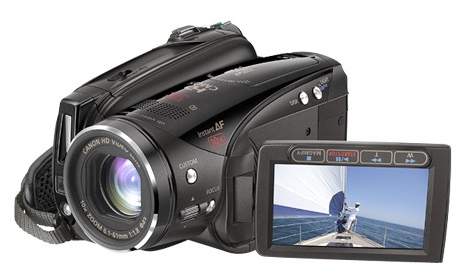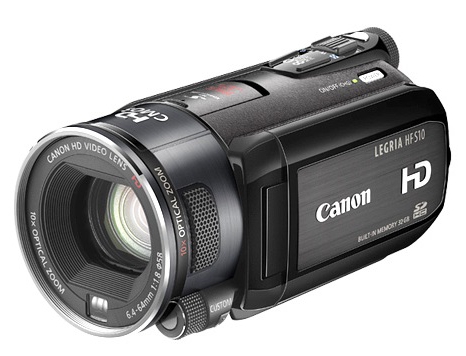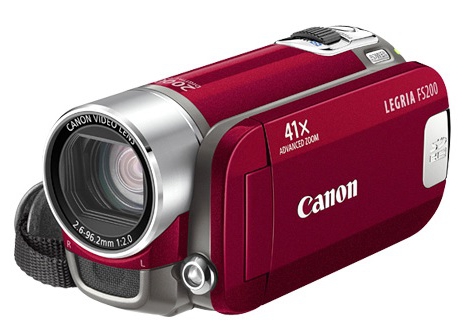Among the many semi-professional and amateur video cameras on the market today, the novice operator can easily get confused. This is partly due to the complexity of understanding the device of this technique.
When choosing, you have to deal with many technical characteristics, which are not so easy to figure out. A short review of what is what and why all this is needed in the camcorder can help everyone answer the question of how to choose a camcorder.
Types of Camcorders

How to choose a camcorder? After all, they can differ in the type of medium on which the video is being taken, in the recording format, the type of viewfinder, the type and number of CCDs, the type of scan, as well as the purpose.
MiniDV Camcorders
These are those in which recording is conducted on miniDV tapes. This type is most popular because of the good combination of recording quality and price. The material recorded by such cameras can be processed on a computer and edited. According to customer reviews, MiniDV camcorders have several advantages over others. But, like all good things, these same cameras have their drawbacks. When transferred to a computer, the footage will take up a significant amount of hard disk space (1 hour of video - about 15 gigabytes).
DVD camcorders
Recording in these cameras is performed on a special disc - miniDVD. This disc is easily inserted into the DVD-player and makes it possible to view all the footage. These cameras are popular with many fans because of the ease of viewing. However, these cameras cost more than the previous ones, and only 20 minutes of video can be recorded on one side of miniDVD.
Flash camcorders
These cameras are a great choice for avid computer geeks with laptops. Recording to the Flash-card allows you to transfer the captured video to the computer and edit there. The only obstacle is the cost of large flash cards.
HDD cameras
This type of camera is similar to the previous one, only recording is not on the Flash-drive, but on the hard drive. The quality of the footage is low, but the cost of the camera, on the contrary, is high. Another inconvenience, according to users, is that hard drives are quite sensitive to shock and shock. And therefore, taking such a camera on a long trip through forests, fields and mountains seems not too comfortable, since you have to constantly protect it.
HDV camcorders
How to choose an HD camcorder? To do this, you must be an enthusiast, and, as the owners themselves say such equipment, provided by an enthusiast. To mount high-resolution video, you will need a very powerful computer or an expensive expansion card. And you can view the edited material in proper quality on a plasma panel, TV, at a price not inferior to it, or using HDV-projectors.
HDV or AVCHD?
Cameras may also vary in recording format. How to choose a digital video camera for shooting high-quality video? For this, two video recording formats are suitable - HDV and AVCHD. The only difference is the compression algorithm. The AVC / H.264 codec in the AVCHD format is faster and better. Such compression is used today mainly when writing to Flash-cards. But in order for a high-quality recorded video to realize itself, you also need an appropriate matrix, optics.
Camcorder device
In order to correctly answer the question “How to choose a video camera?”, You should find out what it consists of and what functions its individual components have.
Lens
This is a lens system that has one task - to focus the light flux on a photosensitive matrix. But not every lens does this very well. The principle of “price equals quality” is also true here. Therefore, video cameras of the lower and middle price segment are not able to boast of a good lens. And the main difficulty in choosing a camcorder is that it can be problematic to determine the quality of the lens directly in the store. Only working with a video camera will determine the quality of the lens.
Viewing angle
It depends on the focal length of the lens. The smaller the focal length, the larger the picture gets into the lens. But with a significant decrease in the focal length, optical distortions appear, and to eliminate them, a more complex video camera design is required, which affects the price. Therefore, manufacturers in budget models limit the minimum focal length.
Zoom
Often when shooting a video, I want to zoom in or delete the subject. Changing the distance using optics or electronics without loss of quality is possible only taking into account all the features of this process. So, the optical zoom (Zoom) is produced by moving the lenses and can vary from 10 to 25 units. The object is approaching or moving away. An indicator of 10 units is quite suitable for ordinary shooting, while 20 units already require the use of a tripod, because the camera begins to respond to the slightest hand tremor.
CCD

Optics of a video camera transfers everything “seen” to a CCD matrix, or rather its sensitive elements. The CCD matrix converts the image into an electrical signal. Moreover, the larger the size of the matrix, the better, as this allows you to better control the lighting and darkness due to greater photosensitivity. The standard diagonal of the matrix is 1 \ 4-6 mm or 1 \ 3-8 mm. The resolution of the CCD is measured in pixels. To avoid factors such as matrix noise and grain size, the number of pixels should be large (min. Resolution - 500 thousand pixels (0.5 megapixels)).
Professional cameras boast 3CCD (3x CCD) technology. In these devices, the light layout is made in three color tones: the light entering the lens breaks up into red, blue and green, and each of them is processed by its own matrix. At the end of the processing process, they are again combined into a single stream. In this way, color rendering is improved and color gamut distortion is eliminated. For home shooting, a single-matrix camera is enough.
Types of Camera Viewfinders
There are two types of viewfinders: optical and mirror.
- Optical image biases, which is noticeable in projection.
- Mirroring clearly and accurately conveys the picture in the frame, and there is no image shift to the side.
But both cope with their tasks: help in choosing the most suitable angle for shooting, setting up the video shooting process and continuous monitoring of what is happening in the frame. In addition, viewfinders come in color and black and white. The former retains its natural color reproduction and tone, while the latter retains better clarity. Since all models of modern camcorders have a liquid crystal screen, shooting is quite easy, even when in an uncomfortable position (holding the camera over your head or even sideways).
Image stabilizer
Modern camcorders have a special device that helps to avoid image fluctuations when shooting. This device is called an “image stabilizer." It can be optical and electronic.
- The electronic stabilizer works using a part of the matrix, the information from which is transmitted to the processor for processing. Great for amateur photography and home video.
- Optical works due to an additional set of lenses.Information, using certain sensors, is fed to the video camera processor, which decrypts the data and controls stabilization lenses. The transmitted information is the speed, amplitude and direction of oscillation. That's why the image does not go beyond the boundaries of the matrix and remains motionless. This type of stabilizer is more preferable, as noted by those who purchased a camera with this stabilizer.
Sweep Type
Scanning is interlaced and progressive. At the first - objects in the camera move smoothly. But when viewed on a computer monitor, a “comb” appears, which is easily removed by the video editor. In the second, smoothness is lost, but if the footage is viewed exclusively on a computer, then progressive scan is preferable.
LCD screen and battery

Most of all, buyers are attracted when the camcorder has a large and bright screen - then it is very pleasant to work with it. The picture can be viewed in detail.
But the larger the screen, the less battery life the camera has. A capacious battery will not interrupt shooting at the most unexpected moment.
If everything is clear with the types of video cameras and their device, then it's time to move on to the question of how to choose a video camera of a particular model. To do this, you need to determine the price of the issue by comparing models of different manufacturers.
It is better to choose a model with the maximum size of the CCD. Equally important is the number of effective pixels. It can be different in models with the same sensor parameters.
It must be decided whether analog inputs are required along with digital. And if the second is necessary in the case of HDV and MiniDV, then the first can be easily abandoned, if, of course, the plans do not include digitization of old archives.
If in the first place is the quality of the recorded material, then you should focus on models with a reasonable aperture and minimal "zoom". Maximum aperture required when shooting in low light conditions.
Large digital “zoom” should not greatly affect the choice, since its use significantly reduces the quality of the picture.
If the choice is between several similar cameras and their differences are only in the “bells and whistles” (sports and portrait mode, flashlight, backlight, backlight compensation function, additional megapixels for the photo mode, etc.), then you should buy a younger model. It is more correct to spend the saved money on useful accessories (illuminators, tripods) or an inexpensive camera that can take many beautiful photographs without involving a video camera in this process, which is not intended for this.
Electronic stabilizer proved to be good (Sony models are especially proud of it), an optical stabilizer, all other things being equal, is preferable.
Many people believe that three-matrix systems give better resolution and color reproduction, and less color noise. There is some truth in such opinions, but today there are models with one CCD matrix that are in no way inferior to their three-matrix counterparts.

It is also worth paying attention to the dimensions of the camera and the scope of delivery. A miniature camera in the hands of a moving person looks spectacular, but a film shot with such a camera does not look so good. The camcorder for shooting high-quality video should be held with both hands and held with the second hand behind the lens, but not in the viewfinder.
Therefore, when choosing a video camera, you should hold it in your hands to make sure how well and convenient it will subsequently work with it. In addition to the manual and the camera itself, the package should include: a battery, a charger, one or more connecting cables, sometimes a control panel is provided. In addition, there may be a disk with software for video editing.
When the choice is narrowed down to 2-3 models, test them in the same conditions.This will help make the final decision.
Additional functions
In addition to standard functions, each model of the camcorder can have additional features that can be both useful and not very good.
Manual White Balance
Under different lighting conditions, the white color in the camera may have different shades. And so that the white color remains white, the camera automatically adjusts the white balance. But automation can also fail. And the processor does not always adjust the white balance quickly. That's why the manual adjustment of this parameter is a significant plus for the camcorder.
Manual Focus Function
As with white balance, automation does not always accurately focus on the subject. Sometimes a camera can just defocus when you don't expect it. Therefore, temporary switching to manual focus can be very useful.
In general, we can say this: the presence of manual adjustments of shutter speed and aperture, and other modes of manual image adjustment can significantly help in the video process.
Photo Capture

The camcorder is designed for video shooting. And photographs should be taken with cameras. Even the most budgetary “digital dust camera” will take a better shot than a standard video camera with a similar function. Its necessity could be considered justified if there were a matrix in the video camera with the number of pixels more than 2 million. But such a number of pixels will reduce the quality of video recording.
Built-in effects
Digital faders, or built-in effects, such as the effect of mirror reflection, shooting "antique", the effect of crooked mirrors, etc., are most likely created for the banal pumping of money. Any video editor will allow you to do something breathtaking from the captured video and give any effect, while the source will remain clean. While a video shot with an effect is difficult to bring back to normal.
Night mode
Another way to spend money in vain. Only dedicated cameras can shoot in low light conditions. Minimum illumination plus night mode in a standard camcorder is a terrible picture with many artifacts and noise. If an object moves, it will be blurry. In many video editors, the captured material can be highlighted and get a better picture.
Infrared function
How to choose an outdoor surveillance camcorder? First of all, you need to pay attention to the presence of infrared illumination. Infrared illumination was originally intended for this type of camera. And even in them it is not always qualitatively implemented. In a conventional camcorder, it looks ridiculous, although there are such models.
Defining a point of sharpness or a point of light
This function allows you to directly indicate on the LCD screen the point at which the brightness and sharpness are adjusted. This helps both when shooting several similar objects, to highlight the most important of them, indicating the point of sharpness, and when shooting a moving object, when the background of the object is constantly changing from light to dark. By specifying a point of illumination, you can avoid darkening or exposure of the object.
Zebra function
One of the useful features, according to the reviews of the owners of cameras, revealing "overexposed" areas. On the screen, such areas will be shown as completely white. Using the viewfinder, it is not always possible to determine the true illumination. Here the zebra function will come to the rescue.
Who is in the market?
How to choose the right camera when there are so many models from completely different manufacturers on the market? The original rating of video cameras presented in the article should help in this. In fact, the market is divided between four main players: Sony, Panasonic, JVC, Canon. Sharp has only three or two MiniDV cameras in its assortment; they are practically not represented in our market.At Hitachi DVD-cameras are not in special demand because of the commitment of models to exotic discs for recording (Mini-DVD-Ram). Samsung has a wide range of cameras, but Koreans still have a lot to learn from their Japanese counterparts.
Budget MiniDV Models
Budget models of MiniDV cameras start at $ 250. So minimal
the threshold is for everyone who wonders how to choose a digital video camera. What is bought for that kind of money? 1/6 inch CCD and 800 thousand pixels, of which only 400 thousand are used when shooting, since the rest are assigned to the tasks of an electronic stabilizer. Lens with excessive zoom. These cameras are very sensitive to lighting, or rather to its lack, due to the low sensitivity of their tiny sensor.
Therefore, when shooting indoors, additional lighting will be required. A small number of effective pixels will not provide accurate color reproduction and high resolution, and excessive "zoom" badly affects the quality of the "picture". In general, the budget models presented on the market are shot the same. Panasonic, JVC and Canon are the main manufacturers whose products should be paid attention to when choosing budget equipment. Their initial models do not have “bells and whistles” (flashes, backlights, recording to a memory card, etc.). But, as mentioned above, this does not significantly affect the quality of shooting. Therefore, with a limited budget, this is a good choice.
MiniDV cameras. Average price range
The price of these cameras lies in the region of 500 dollars. And, choosing such a camera, you should first of all pay attention to the quality of shooting, but not to additional functions. CCD - 1 / 4.5 inches, the “zoom" of the lens is not higher than 15x.
Price = Quality
Beginners do not buy camcorders for 650-850 dollars. But cameras of this group are superior to cheaper analogues in such an important parameter as sensitivity.
Hi-End class MiniDV
A quality camcorder cannot be cheap. This is precisely the motto of manufacturers. The cost of this class of video cameras starts around $ 1,000.
HDV Camcorders
In the Hi-End class, MiniDV camcorders are successfully replaced by HDV cameras. So, Sony is represented by two models - HDR-HC1E and HDR-HC3E. The first has more affinity with semi-professional models (higher resolution, instead of a dial switch - a manual focus ring), the second has greater sensitivity and the dimensions of the camera are smaller, and it has an HDMI connector that allows you to connect to other HDV devices using a "digital" number.
MPEG2 Camcorders
The number of models of this type of camcorder on the market is not so great when compared with MiniDV. It is for this reason and because of the “fashionable” recording format that manufacturers raise prices, which does not justify the quality of the video recording made by these cameras, as noted by those who have already purchased this type of equipment. And most budget MPEG2 camcorders fully follow this trend. It is very difficult to find a reasonable price here. HDD and DVD cameras cost more than $ 500, and models with Flash cards are even more expensive. This situation is smoothed out a bit when moving to the middle and Hi-End class.
Conclusion
Much more can be written about the design of video cameras, the pros and cons of individual models and rulers in general. Conventionally, all video cameras can be divided into two large categories. The first should include models for novice operators, cameras for undemanding people.
If the question is how to choose a camcorder for the home, then cameras from this category are ideal. They will not have high-quality optics, an optical image stabilizer, a large photosensitive sensor and viewfinder, and a high-quality LCD display. But then these cameras are affordable in terms of price - 9-12 thousand rubles.
The second category includes cameras with a “claim”. They are intended for professionals or for people who already have experience with this device.These are cameras with good optics, optical zoom, a large CCD (best of all, three large matrices), black and white or color, but of high quality, the viewfinder, large sizes, high-quality liquid crystal display and much more.
If, despite all of the above, the question of how to choose a video camera is still open, then you can study the forums with reviews, view the rating of video cameras on other sites, and consult with the owners.